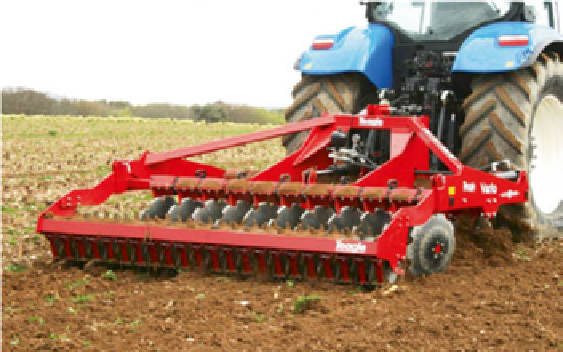Agriculture Reference
In-Depth Information
with soil, and minimize weed growth. In addition,
the use of organic materials as mulch can help
enhance soil fertility, structure, and other soil
properties. Rice straw is abundant in rice-growing
areas and generally recommended for summer
crop production. Polythene,
Saccharum
spp., and
Canna
spp. can also be used as mulching
materials. In the areas where temperatures are
high, dark-colored plastic mulch is recommended
in combination with rice straw (AVRDC
1990
).
Dark color of plastic mulch prevents sunlight
from reaching the soil surface, and the rice straw
insulates the plastic from direct sunlight, thereby
preventing the soil temperature rising too high
during the day.
During the hot rainy season, vegetables such
as tomatoes suffer from yield losses caused by
heavy rains. Simple, clear plastic rain shelters
prevent water logging and rain impact damage on
developing fruits, with consequent improvement
in tomato yields (Midmore et al.
1992
). Fruit
cracking and the number of unmarketable fruits
are also reduced. Another form of shelter using
shade cloth can be used to reduce temperature
stress. Planting vegetables in raised beds can
ameliorate the effects of fl ooding during the rainy
season (AVRDC
1981
).
and altering the intensity of fertilizer and
pesticide application as well as capital and labor
inputs can help reduce risks from climate change
in farm production. Adjusting the cropping
sequence, including changing the timing of sow-
ing, planting, spraying, and harvesting, to take
advantage of the changing duration of growing
seasons and associated heat and moisture levels,
is another option. Altering the time at which
fi elds are sowed or planted can also help farmers
regulate the length of the growing season to better
suit the changed environment. Farmer adaptation
can also involve changing the timing of irrigation
or use of other inputs such as fertilizers.
12.2.4 Conservation Tillage
Tillage is the agricultural preparation of the soil
by mechanical, draught-animal, or human-
powered agitation, such as plowing, digging,
overturning, shoveling, hoeing, and raking.
Small-scale farming tends to use smaller-scale
methods using hand tools and in some cases
draught animals, whereas medium to large-scale
farming tends to use the larger-scale methods
such as tractors (Fig.
12.3
). The overall goal of
tillage is to increase crop production while con-
serving resources (soil and water) and protecting
the environment.
Conservation tillage refers to a number of
strategies and techniques for establishing crops
in a previous crop's residues, which are purposely
12.2.3 Land Management Practices
Changing land management practices such as
shifting production away from marginal areas
Fig. 12.3
Conservation
tillage using disks and
tines (Source: Peeters
Agricultural Machinery,
Netherlands)

Search WWH ::

Custom Search